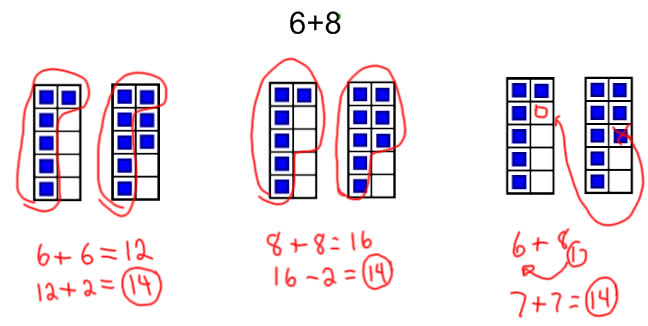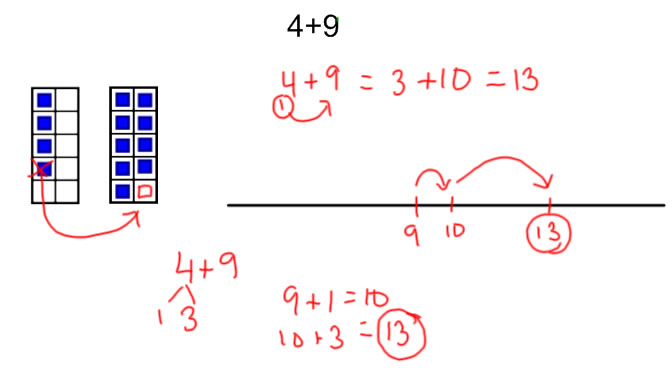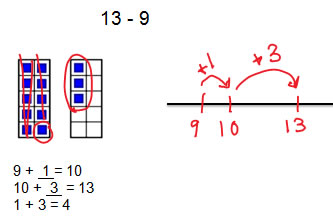
In order to be ready for the use doubles strategy, children first need to learn (memorize) a lot of the doubles, and decompositions of small numbers.
Use doubles is a good (efficient) strategy to use when the numbers being added are close to each other (within 1 or 2 of being doubles).
If the numbers are 1 apart, you can use the double of either number as a stepping stone to figure out the problem:

If the numbers are 2 apart, you can use either number as a stepping stone, or you can share to equalize the numbers:

Ten frames and equations both work well to show the use doubles strategy. Number lines work too, but less well.
In order to be ready for the use 10 strategy, children first need to learn (memorize) a lot of the decompositions of 10 and numbers smaller than 10..
Use 10 is a good (efficient) strategy to use when one of the numbers is close to 10 (9 or 8) and the total sum is greater than 10.

Ten frames, number lines and equations are all good ways to show this strategy. When using a number line, you should show it as adding on from the higher number (9) rather than the number that comes first.
Add up using 10 to subtract is the subtraction version of use 10 to add.
Add up using 10 to subtract is a good (efficient) strategy to use when the minuend is greater than 10, and the subtrahend is 8 or 9.

Number lines and equations are the best ways to represent add up using 10 to subtract. 10 frames work too, but they work a little less well.
Think addition involves rephrasing the subtraction problem in a part-whole model, rephrasing it as missing number addition.
Think addition is a good (efficient) strategy for any problem where the child knows the associated addition fact.
In a part-whole model, the minuend (number being subtracted from) is the whole, and the subtrahend is a part. The difference is the unknown part.

Equations and part-whole diagrams such as bar diagrams and math mountains are good representations for this strategy.